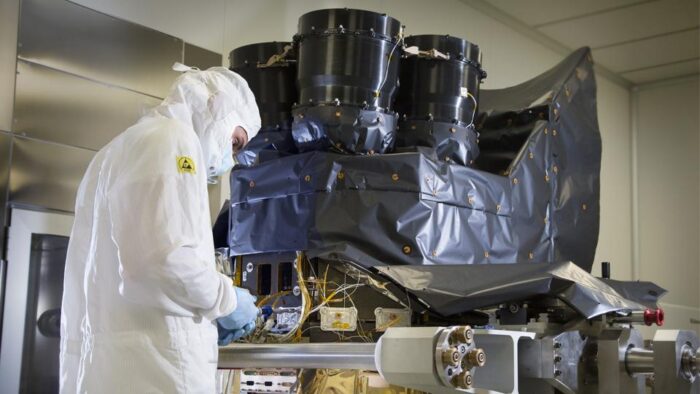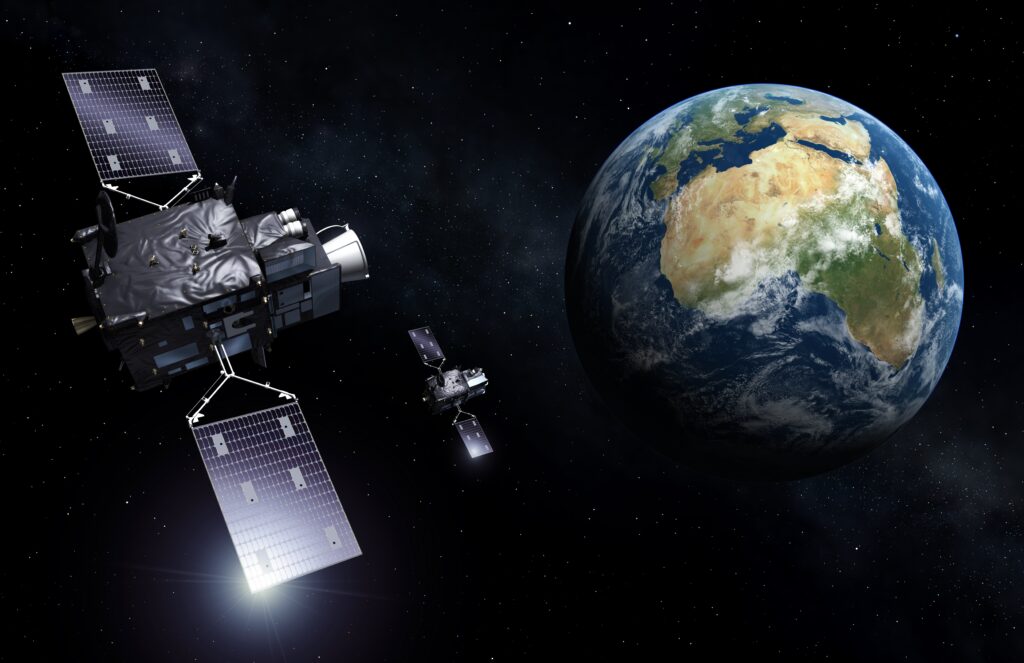The European Space Agency (ESA) has announced that its first Meteosat Third Generation (MTG) weather satellite is being fitted with its Lightning Imager in one of the last major milestones to take place before liftoff at the end of the year.
Once in geostationary orbit, the instrument will continuously monitor lightning over more than 80% of Earth’s disc for early warnings of dangerous storms. It is even capable of imaging relatively weak lightning events in full sunlight.
Following on from the first and second generations of Meteosat satellites, the MTG mission will deliver essential data for weather forecasting from geostationary orbit for the next two decades. The MTG mission comprises two types of satellite: four MTG-Imagers (MTG-I) and two MTG-Sounders (MTG-S).
MTG-I1 has already been equipped with one of its instruments, the Flexible Combined Imager, which will deliver a full image of Earth every 10 minutes to monitor and forecast the weather. It can also zoom in to deliver images of selected regions every 2.5 minutes.
The Lightning Imager was developed by meteorological equipment specialist Leonardo in Florence, Italy, and has now been delivered to the Thales Alenia Space’s facilities in Cannes, France, where it is being integrated into the MTG-I satellite.
Despite a relatively simple instrument architecture, with no moving parts, the complexity of the Lightning Imager is in the resolution and speed of the detectors, and the subsequent image processing of the data on board, which automatically rejects any data not related to lightning. “At the heart of the instrument are four optical heads, which each have detector arrays of more than 1.2 million pixels,” explained Paul Blythe, ESA’s Meteosat program manager. “These arrays are sampled every millisecond to measure the energy emitted in their respective fields of view.
“For each of the more than 4.8 million pixels, these signals are then compared to a reference image of Earth to determine if a lightning flash has occurred. With this number of pixels and a sampling rate of 1 millisecond, the raw data rate of the instrument is enormous, at several Gbit/second. This is then reduced by over a factor of 250 through clever logic in the front-end electronics, followed by advanced signal processing in the state-of-the-art single board computer provided by Thales Alenia Space.
“The net result is an output from the instrument of around 30Mbit/second, so that only relevant data are transmitted to the ground stations for further analysis,” he said.




